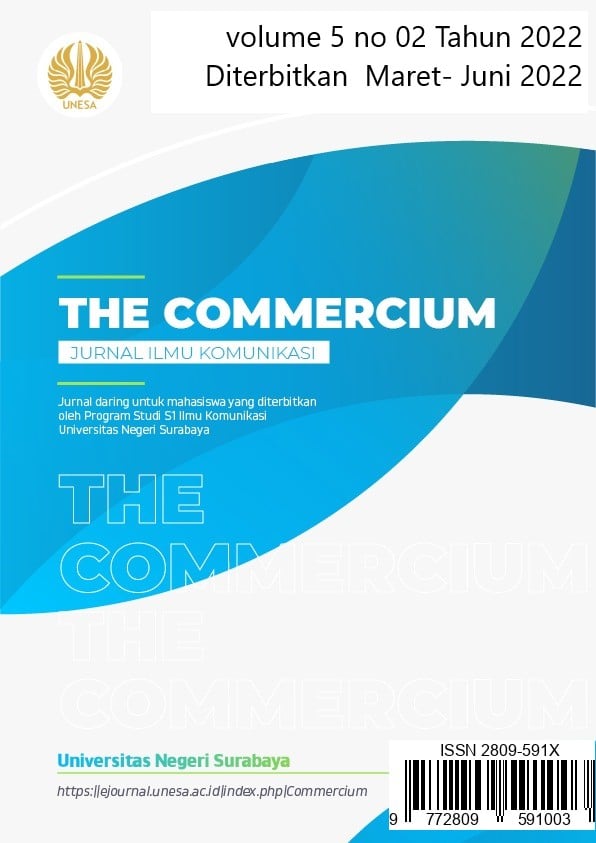THE EXISTENCE OF SANDUR ART IN MANDURO VILLAGE, KABUH DISTRICT JOMBANG DISTRICT
(STUDY OF COMMUNICATION ETNOGRAPHY IN THE SANDUR GAYA RUKUN COMMUNITY)
DOI:
https://doi.org/10.26740/tc.v5i2.47368Abstract
This research on the existence of Sandur Arts in Manduro Village, Kabuh District, Jombang Regency is intended to find out how the existence of Sandur art in Manduro Village is the identity of the village. The Sandur Gaya Rukun Association is the only art association currently remaining in Manduro Village. This Sandur art was born and originally from Manduro Village so that it has its own uniqueness and describes the reality of the Manduro community. This study uses the ethnographic method of communication because this study looks at the communication behavior of a group of people in the cultural theme. Through the Sandur Gaya Rukun association, researchers use the ethnographic method of communication by focusing on the communication activities contained in the object of research, which consist of communicative situations, communicative events, and communicative acts. Data were collected through interviews with purposive sampling technique and also observation. In this study, it is known that the existence of Sandur art in Manduro Village still survives. This is because several aspects and values contained in Sandur art are closely related to Manduro Village, namely traditions and moments/events in Manduro Village that always feature Sandur in every arrangement of events, story scripts raised in performances, and also art. This is considered as the identity of Manduro Village so that the village community really cares and defends it. Keywords : existence, sandur, the Gaya Rukun association, Manduro Village, Ethnographic of CommunicationDownloads
Download data is not yet available.
Downloads
Published
2022-06-29
How to Cite
Zahro, A. F. (2022). THE EXISTENCE OF SANDUR ART IN MANDURO VILLAGE, KABUH DISTRICT JOMBANG DISTRICT: (STUDY OF COMMUNICATION ETNOGRAPHY IN THE SANDUR GAYA RUKUN COMMUNITY). The Commercium, 5(2), 109–122. https://doi.org/10.26740/tc.v5i2.47368
Issue
Section
Artikel Ilmiah IKOM
 Abstract views: 235
,
Abstract views: 235
, PDF Downloads: 272
PDF Downloads: 272

